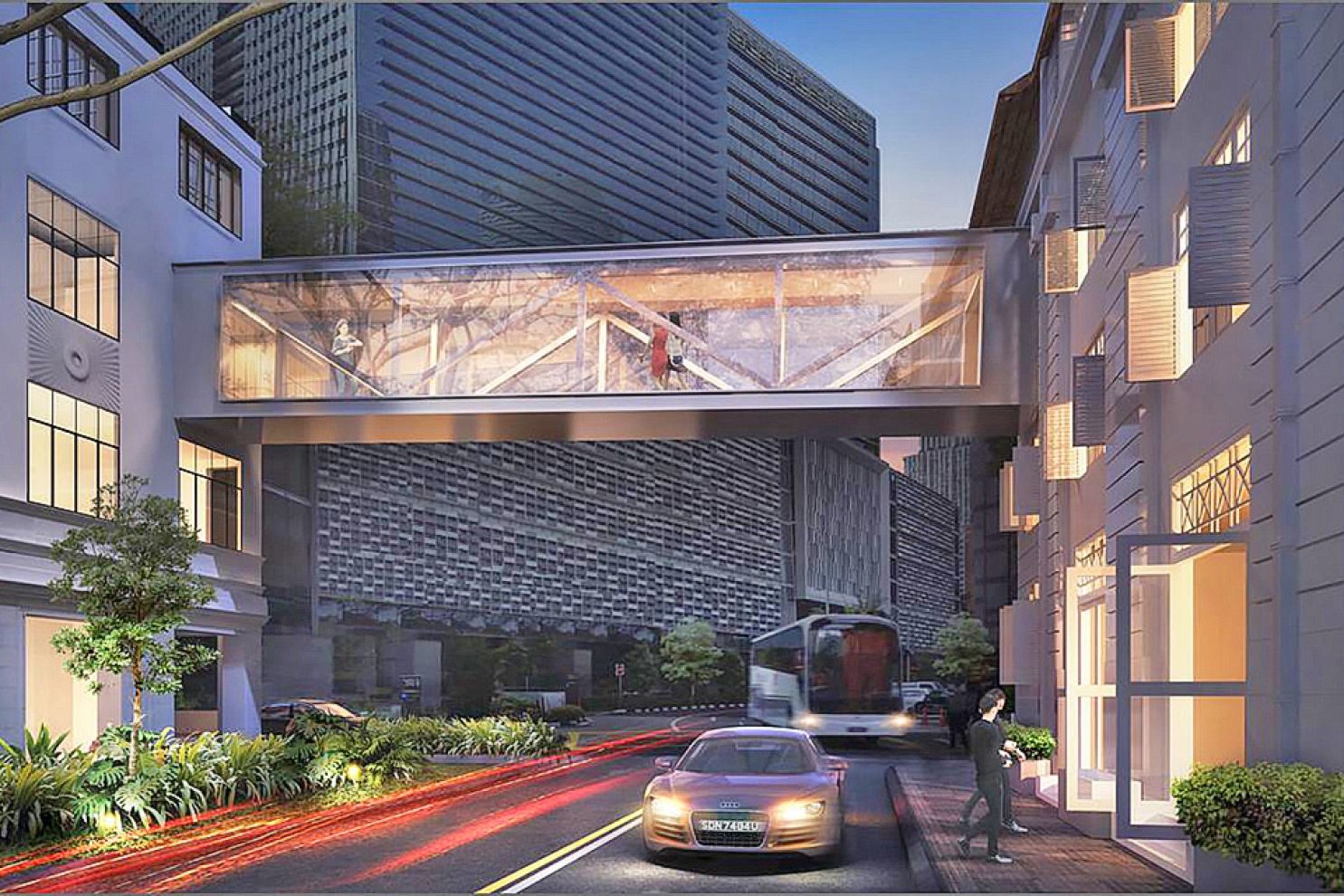Strong Take-Up Drives Expansion At Maxwell Chambers

The Ministry of Law (MinLaw) on Thursday announced that 65 per cent of the new office space at 28 Maxwell Road has already been taken up even before refurbishment works begin.
To meet the strong leasing demand, the ministry will build a second annexe block to add 3,500 square feet (sq ft) of office space, on top of the 120,000 sq ft expansion that was originally planned.
The whole development has also been renamed Maxwell Chambers Suites to reflect its new role as an integral part of Singapore's dispute resolution ecosystem, Indranee Rajah, Senior Minister of State for Law and Finance, said in her keynote address at the groundbreaking ceremony.
When completed in 2019, Maxwell Chambers Suites will also provide a 24-hour public thoroughfare to allow easier pedestrian access between Tanjong Pagar MRT station and the Chinatown area.
In all, Maxwell Chambers Suites will provide about 50 new offices over four floors for international dispute resolution institutions, arbitration chambers, law firms and ancillary legal services.
Existing tenants have also decided to expand their floor plates, with The Arbitration Chambers and One Essex Court more than doubling the floor space of their offices.
MinLaw in January this year said it would be taking over the conserved building at 28 Maxwell Road, where the Red Dot Traffic Building once stood, for the expansion of Maxwell Chambers.
This is in line with the ministry's plans to take dispute resolution work in Singapore up another notch. It has identified investor-state dispute settlement as a new growth area for dispute resolution work in Singapore.
This refers to resolving investment disputes between foreign investors and host states. For example, if an investor put his money in a highway project, and the host government did something to impede the construction of the infrastructure, this matter would require arbitration to resolve. Such work typically involves complex and high-stake cases.
As at June 2017, around 10 investment arbitration hearings were held or are going to be held in Singapore this year, double the number in 2013.
Ms Rajah said: "Locally, we already have expertise in this area. A couple of our senior counsels, Mr Andre Yeap and Mr Alvin Yeo, have already been involved in cases like these, and there are others as well who have been advising...
"There are also international practitioners in the space who are doing it elsewhere at the moment. We would like to attract them to come here and do their arbitrations here. And with the expansion of Maxwell Chambers Suites, it will be a very conducive environment for investor-state arbitration," she told reporters.
Maxwell Chambers is the second most preferred hearing centre in the world for arbitration, after the Hong Kong International Arbitration Centre.
At the event, Philip Jeyaretnam, chairman of Maxwell Chambers, also described the genesis of the idea - how it first occurred to him that the former Red Dot building could become an extension to the existing Maxwell Chambers.
While walking around the Red Dot building one day, he ventured up to the upper floors and was struck by the two courtyards and clustering of small offices around them.
"To me, this strongly evoked the warrens and courtyards of legal London. Small offices clustered around open spaces fit the instincts of barristers and advocates who need their own offices to prepare for cases and write opinions, while having opportunities to interact with their peers including over meals and, dare one say, drinks. Think of the buzzing beehives of the Inns of Court."
The building at that time, however, was being used by design-type firms and many units were unoccupied.
It seemed to him that the design companies felt cramped by the small spaces rather than liberated. He became convinced that the building would be much better suited to lawyers than designers.
In the bigger picture, Maxwell Chambers Suites is expanding alongside a wave of other new projects in the vicinity, including Frasers Tower, Tanjong Pagar Centre, OUE Downtown Gallery, as well as the redevelopment of the CPF building by an Ascendas-Singbridge consortium.
All this is part of the government's effort to transform Tanjong Pagar. When completed, these developments together will create 300,000 square metres (sq m) of office space, 60,000 sq m of retail and F&B offerings, 1,200 hotel rooms and more than 1,000 homes.




